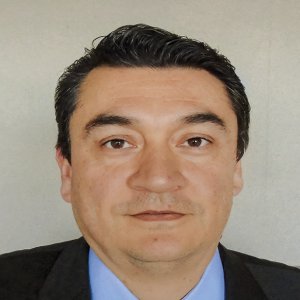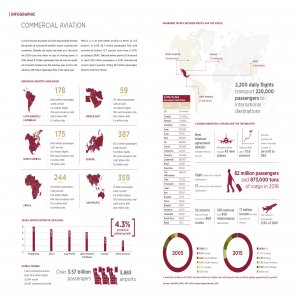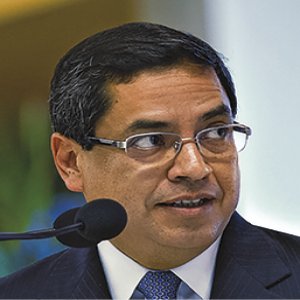Collaboration Is the Name Of the Game

STORY INLINE POST
Q: How has Mexico’s aerospace sector grown and what are your expectations for 2017?
A: Since 2004, Mexico’s aerospace sector has grown 15 percent annually. The country began performing manufacturing exclusively and gradually entered into maintenance. Now, it is starting to develop its research capabilities. In the first quarter of 2017, the Ministry of Economy counted 312 industrial facilities for the aerospace industry, of which 80 percent are related to manufacturing, 11 to MRO activities and the remaining 9 percent to R&D, design and engineering. Engine parts designed and manufactured in Mexico are flying all over the world.
In 2016, exports reached US$7.18 billion, which helped us climb from 10th place to become the sixth biggest exporter of aerospace parts to the US, the largest aerospace market in the world. This was achieved in 10 years and our goal is to enter the top three by 2020. The sector also generates over 50,000 jobs in 19 states in Mexico.
Mexico has strong capabilities working with sheet metal and performing traditional assembly, especially with aluminum. We are good manufacturers of CPUs and harnesses and we are developing skills to manufacture more composite parts. Moreover, Mexico has capabilities for MRO services, with ventures from Mexicana MRO and TechOps Mexico, making the country a destination for MRO. This trend is leading other states to develop their own workshops.
Our expectation for 2017 is to reach 60,000 jobs, to have 330 industrial facilities, to surpass US$8 billion in exports and to reach a 23 percent trade surplus with the US for aerospace products. Globally, Mexico is ranked 14th for competitive manufacturing platforms and our goal is to be in the top 10 by 2020.
Q: What are your main goals as the new President of FEMIA?
A: The key word for Mexican aerospace is collaboration. Thus, at FEMIA our priority is to promote collaboration among all clusters in Mexico. During FAMEX we, alongside the five aero clusters, signed a memorandum to prioritize the needs of the sector using all the capacity and skills within the clusters. The Mexican aerospace sector has many strengths that we need to capitalize on to improve the industry’s image at a global level. Signing this agreement signifies the clusters’ will to act as a team in the interest of developing the country’s aerospace industry.
The second priority is to develop the supply chain. FEMIA has a division in charge of supply-chain development that is identifying the country’s existing capabilities to address existing gaps by attracting foreign investment. Furthermore, OEMs and Tier 1 companies can develop their supply chain through FEMIA. Aerospace parts volumes are low. By consolidating the volumes of different companies, we can make an attractive package for interested suppliers.
Other goals include raising our membership to 100 companies, which we achieved during FAMEX 2017. This year we are celebrating FEMIA’s 10-year anniversary and we are analyzing what is next in the federation’s future. Mexico is in a unique situation at this point. We are at the crossroads between continuing as a small industry or expanding.
Q: How will FEMIA change to address the needs of the sector?
A: The sector and all its members are growing. Safran, Bombardier and other big players are expanding their plants and diversifying their operations. Many aerospace companies began with simple processes. Now, they have diversified and created complex assembly lines with which they can export to other countries.
During the past 10 years, FEMIA has built credibility with companies and government. Given the critical volume we have reached, Mexico is going to become a key player in the industry. We must align our strengths to attract more investment and direct it to the sector’s top needs.
Q: How is FEMIA helping national and international companies gain governmental support?
A: In the case of international companies, we request the support of the government to simplify the process of doing business in Mexico. The government has to create the appropriate conditions to capture companies interested in coming into the country and facilitate their entrance. We are also discussing agreements that the government needs to generate with aerospace authorities in other countries. We now have a good agreement with the FAA, for instance, but we lack one with Transport Canada. This means that Mexico can perform MRO operations for US companies but not for Canadian companies, so we are asking the government to foster these types of agreements with both Europe and Canada. Agreements such as BASA and the Wassenaar agreement with the US have opened doors for new industries. BASA unified safety and security standards and Wassenaar allowed local companies to manufacture for the US military. These opportunities spread across the industry to the people and the products manufactured, boosting technology and experience.
For SMEs, we ask the government to support them financially to acquire new equipment or certifications. It is hard for small companies to acquire these certifications because they are expensive and returns on investment take a long time. Now, INADEM supports small companies to acquire these certifications and re-certifications so they can become suppliers in the aerospace sector.
Q: What initiatives is FEMIA promoting to support the consolidation of the aerospace supply chain?
A: In December 2016, we created a commission for supply-chain development. This commission will identify the country’s capabilities and determine, alongside all industry players, what the country needs to start developing. This commission will search for companies and help them to acquire the necessary certifications to supply OEMs and Tier 1 companies.
In five months, the commission garnered enough interest to see a potential total US$160 million investment in casting, forging, metal casting, precision machining, hydroforming, metal stamping, heat and surface treatment, composites, NDT, wire harnesses and cables. All of these are capabilities that Mexico lacks. The country has a good number of OEMs and Tier 1 companies but lacks the lower tiers of the supply chain. This program is funded by the National Committee of Productivity (Comite Nacional de Productividad) and is exceeding its targets.
One of our commissions, led by Benito Gritzewsky, aims to bring the Mexican aero clusters together to promote collaboration and generate a strategic view of what must be done in the country. The goal is also to identify each cluster’s success factors and help them communicate.
Our promotion commission also works with all industrial parks and shelters in the country to promote the establishment of new players in the Mexican aerospace sector. To do so, the commission visits all international fairs to promote the country’s capabilities in the aerospace sector in terms of human capital and facilities. Its goal is to facilitate every entity interested in opening a plant in Mexico, bringing new skills and experience into the country.
Q: What action is FEMIA taking to generate education programs that address the needs of the sector?
A: FEMIA created an education commission led by UNAQ’s Dean, Jorge Gutierrez de Velazco. We are working with the Mexican Council of Aerospace Education (COMEA) to map our strengths in education. This has presented a challenge because there are numerous universities and technical colleges in the country, such as the National College of Technical Professions (CONALEP), all of which have different education plans.
FEMIA is often approached by education centers interested in opening a new degree in aerospace engineering because many believe they can do so with only a wind tunnel and design courses. This is disconnected from Mexico’s needs, however, because the critical mass is located in manufacturing. It would be better for students to learn about current manufacturing practices, project management and specific skills related to electronics or mechanics. Our goal is to create a curriculum that fully addresses the needs of the industry; the problem is that these needs have not been fully identified. Once the local capabilities of universities are mapped, we will identify the needs of companies and merge these two lists.
An aerospace graduate must know the basics of the industry before learning the specific needs of an OEM or Tier 1. This second part of training has to be provided by the employer as processes and certifications vary from company to company. Mexico has a significant advantage in aerospace because the country produces more engineers than countries such as Germany, as we have more young people. This is both a challenge and an opportunity.
























